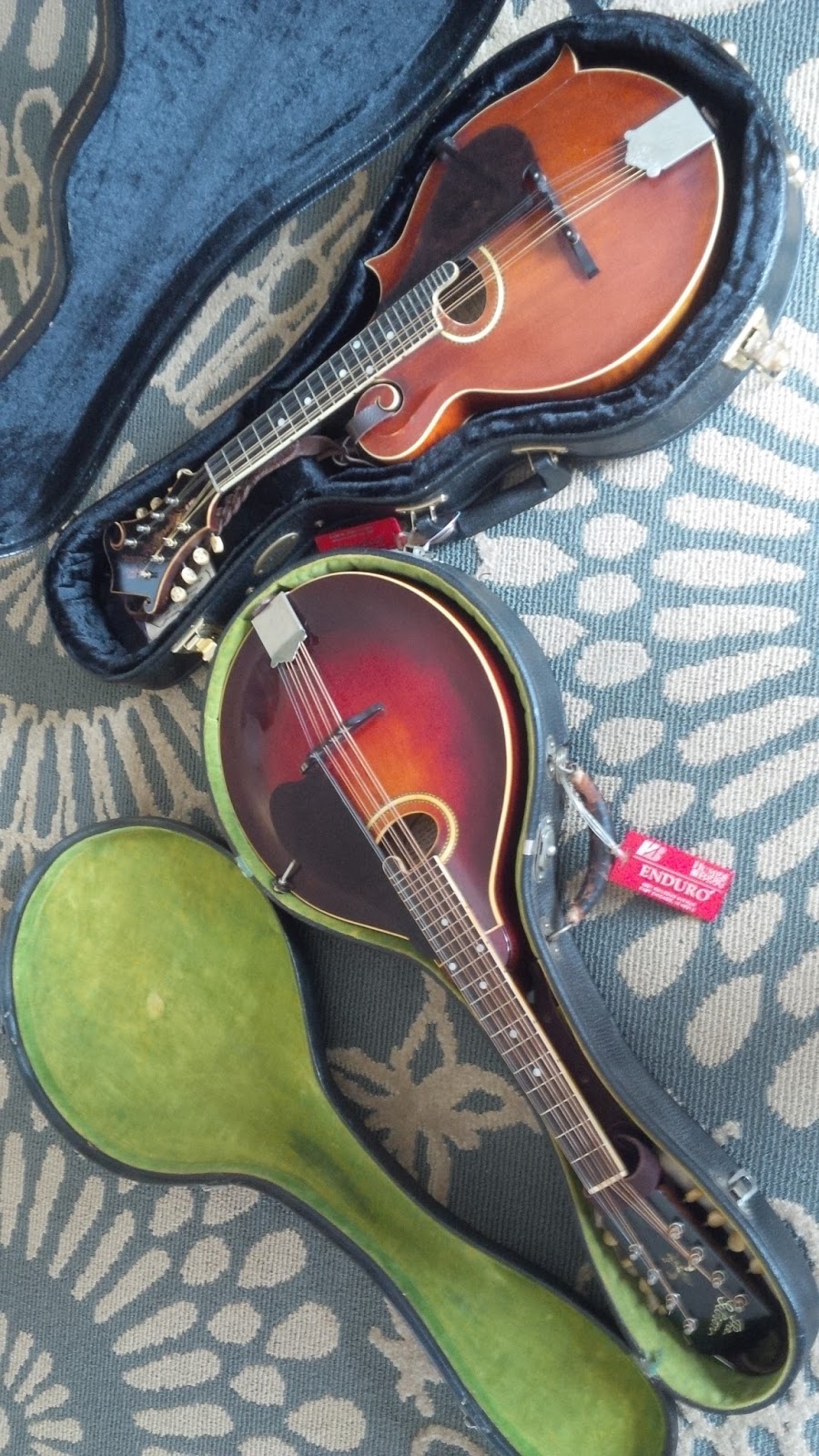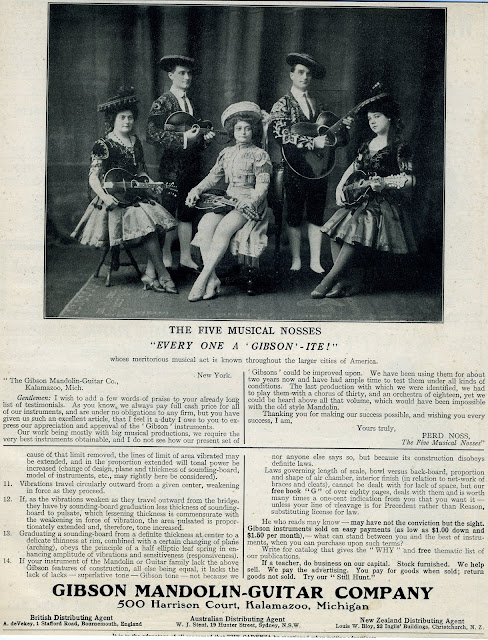An announcement about the formation of a new organization from a 1902 issue of
The Music Trade Review trade publication:
The American Guild of Banjoists, Mandolinists and Guitarists, (AGBMG) is an organization whose membership is intended to include
music publishers, manufacturers and teachers of these three instruments, was
formally launched at a meeting held at Hotel Marliave, Boston, on Jan. 23. A
number of the men well known in these departments were present.
The organization, which has been in
process of incubation for the past two years, has been persistently agitated by
C. L. Partee through columns of his interesting paper, The Cadenza. It was only
last week, however, that the plans, so long formulated, were put into effect.
The objects of the guild as set forth are
to further advance the interests of the instruments named, in their literature,
music and manufacture; to set the standard of competence and establish a higher
average of ability among those desiring to teach; to provide a bureau of
acknowledged authority on instruments and their study and to conduct
examinations and grant diplomas throughout the United States.
The organization went on to publish both
The Cadenza and The Crescendo. Boston
publisher Walter Jacobs founded The Cadenza, and Philadelphia
teacher and publisher Herbert Forrest Odell started The Crescendo as the official organ of the Guild
of Mandolinists, Banjoists and Guitarists. Both magazines included group
arrangements, columns by leading musicians, news and advertisements for sheet
music and instruments. Odell also published a 90 page manual in 1913 called
“The Mandolin Orchestra, A Book for Directors Managers, Teachers, and
Players”
(I’m still searching for a copy of this
publication)
From its humble beginnings in 1902, the
AGBMG grew into an organization of thousands of members, and hundreds of local
chapters in the United States and Canada. During their 1923 annual convention
held in Washington, DC, members were invited to perform at the Whitehouse.
Here’s a news clip from the Adams Transcript (1921) announcing the formation of the Adams Mass. Chapter of The American Guild of Banjoists, Mandolinists and Guitarists. My great grandfather J L Ivers is the founding chapter secretary and musical director. Also mentioned are my great grandmother as a founding “executive board member”, and my grandfather George Ivers as the organization's first treasurer. You might say my great grandfather took control of the chapter from the start, appointing himself as Chapter Secretary, his son, in charge of the money, and his wife on the “executive board.” The purpose of the society is, “to advance the art of music and to encourage the cultivation of musical talent, particularly among players of the various fretted instruments, and to furnish means whereby the people interested may meet in a spirit of co-operation and promote good fellowship.” A lofty goal, but also, I’m sure, as with any of my great grandfather’s efforts in this arena, JL Ivers was strongly motivated by the prospect of moving more Gibson product, and developing and marketing financially successful musical groups.































